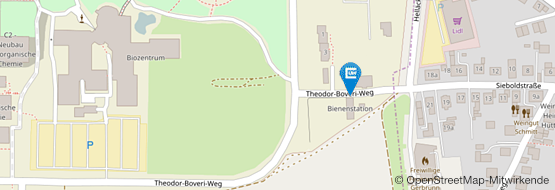Pfeiffer, Keram
Prof. Dr. Keram Pfeiffer
Biozentrum
Am Hubland

The main focus of my research is on the neuronal basis of spatial orientation in insects, specifically on sky-compass orientation. I am particularly interested in how different sky-compass signals, like the sun’s position, the polarization pattern and the color gradient of the sky are integrated. Furthermore I am intersted how distance and velocity information (through optic flow) is encoded in the brain. Another focus of my research is the influence of temperature on the encoding of navigationally relevant signal in the brain.
-
A micro-CT-based standard brain atlas of the bumblebee. . In Cell and Tissue Research, 386, pp. 29–45. 2021.
- [ URL ]
-
Matched-filter coding of sky polarization results in an internal sun compass in the brain of the desert locust. . In Proceedings of the National Academy of Sciences, 117(41), pp. 25810–25817. National Academy of Sciences, 2020.
- [ URL ]
-
Receptive Fields of Locust Brain Neurons Are Matched to Polarization Patterns of the Sky. . In Current Biology, 24(18), pp. 2124–2129. 2014.
- [ URL ]
-
GABAergic Excitation of Spider Mechanoreceptors Increases Information Capacity by Increasing Entropy Rather than Decreasing Jitter. . In Journal of Neuroscience, 29(35), pp. 10989–10994. Society for Neuroscience, 2009.
- [ URL ]
-
Coding of Azimuthal Directions via Time-Compensated Combination of Celestial Compass Cues. . In Current Biology, 17(11), pp. 960–965. 2007.
- [ URL ]
Bachelor
Integrative Verhaltensbiologie I, Integrative Verhaltensbiologie II, Integrative Verhaltensbiologie III, Grundlagen der Humanbiologie / Teil Humanphysiologie, Übungen Humanbiologie / Teil Humanphysiologie
Master
Experimental Sociobiology, Behavioural Physiology and Sociobiology F1, Behavioural Physiology and Sociobiology F2, Master Program "Fokus Life Science"




